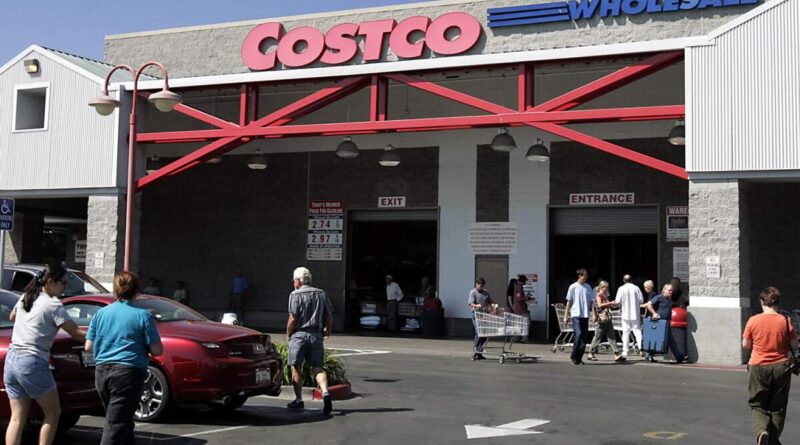After pressure from business groups, they reduced Santa Rosa’s business tax headings in court
About 20 top-grossing businesses — including major medical care providers, big-box retailers and other contractors — would have seen their taxes rise by $100,000 or more .
For example, a medical office whose gross receipts are $167.6 million a year would have paid $586,500, under the proposal, a jump of more than 19,000%, according to city figures.
“To go from $3,000 to half a million by January 2026 is crazy,” said Joanne Webster, president and CEO of the North Bay Leadership Council.
Business groups are looking for collaboration
Business representatives were quickly contacted as the plan was released publicly.
They pushed for public input during a July 9 hearing where the proposal was presented to the full council for the first time, asking the city to pump the brakes and instead work with them on the development.
Rumble and Webster said none of their groups were consulted when the original proposal was made at City Hall.
The division council also raised questions about the increase and said it was against the recently approved plan to encourage economic development in the city. They instructed the workers to meet with the trade groups before returning.
Mayor Natalie Rogers and Council members Eddie Alvarez and Victoria Fleming resigned, citing financial problems related to the development. Council member Chris Rogers and Okrepkie said at the meeting they were unlikely to support the bill as written, while Deputy Mayor Mark Stapp and Council member Dianna MacDonald, part of the council subcommittee where the tax was previously discussed, they seem more supportive.
Webster said removing the cap would eat into corporate profits and such an aggressive increase for high-profit companies would be difficult to accommodate in the short term.
“We agree that the city of Santa Rosa has financial problems and that they need to look at ways to increase revenue,” he said. But we have problems too, and we face the same costs.
Webster said the impact on a wide range of businesses across the 27 industries his organization represents, including the North Bay’s leading employers, is unclear. City officials did not share specifically which group would be most affected and the Leadership Council was considering hiring a consultant to analyze the impact on its members, he said.
But he worries it will discourage growth and could force companies to downsize or move to other cities with better taxes, he said.
Webster did not say who in the group was most vocal about pushing back against the measure, but in general, national chains, supermarkets, health care providers and retailers stood up. face the big jump.
A new proposal is underway
City Manager Maraskeshia Smith, finance staff and council members have spent the past three weeks discussing the tax with business groups, auto dealers, contractors and hospitality groups.
“They started to object,” Okrepkie said of the meetings, admitting that the city’s action should have started earlier. “I think some were surprised by what was thought at first but they’ve become more cooperative as they’ve gone on.”
Labor explored several options about keeping the tax break but likely raising it to $50,000. They are also looking at raising the base tax rate in response to stakeholder feedback.
Rumble, who said the chamber has not taken a legal position on the revised proposal, said maintaining the cap ensures that the tax credit does not increase indefinitely for high-income companies. . The $10,000 max is probably closer to what the cap would have been if the current $3,000 had been adjusted for inflation over the past 30 years.
The city also plans to implement a prorated tax based on gross receipts.
Businesses generating $100,000 or less in gross receipts would pay at least $200, while businesses reporting between $100,000 and $500,000 would pay $500 and those with up to $1 million in revenue would pay $800.
Companies whose annual receipts reached $1 million would pay at least $1,000, plus more for any revenue above $1 million, to meet the new cap.
That means a single medical office that would have paid more than $500,000 under the original proposal would pay more than $10,000 under the new structure.
Webster said the improvements are a good compromise.
“We wanted to come to the table and be partners in creating solutions and I think that’s where we got to,” he said, adding that the Leadership Council supports the initiative.
Small boost for city bags
The revised measures, which would take effect in January if approved, are expected to generate an additional $3 million year to help fund the day-to-day operations at City Hall. The residential tax increase is estimated to bring in an additional $1.2 million per year.
Combined, it’s a much smaller amount than previously thought and means cuts will be needed to balance the budget.
The city implemented a hiring freeze on July 1 and administrators are looking at other ways to make the process more efficient. Staff expect to return to council in October to discuss the proposed budget, according to a staff report.
Okrepkie said additional tax revenue, while important, is never meant to be a panacea for the city’s financial problems. Expiring federal funds that pay for key programs and labor contracts approved by all but one of the city’s consulting firms, with up to 15% raises for three years and other benefits, are the main factors behind the shortage.
In addition to raising taxes, the city needs to take a closer look at its operations, Stapp said.
“We can’t expect to balance our budget in favor of local businesses,” he said. “The city staff put all their time and care into coming to an agreement and creating an ordinance that everyone can agree on and I think we’ve achieved that.”
You can reach Labor Secretary Paulina Pineda at 707-521-5268 or [email protected]. On X (Twitter) @paulinapineda22.
#pressure #business #groups #reduced #Santa #Rosas #business #tax #headings #court

